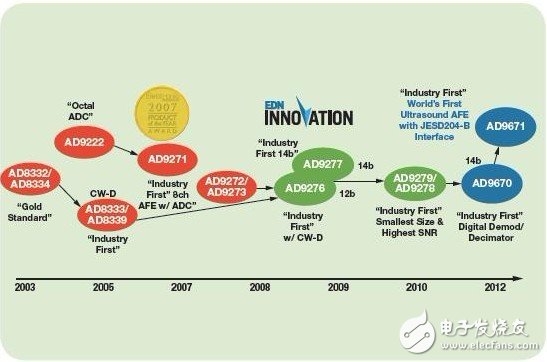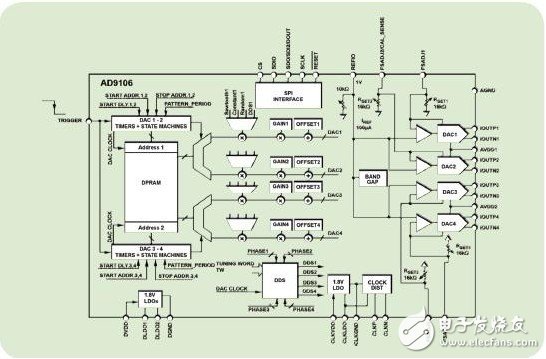The principle and typical architecture of medical ultrasound system:
Ultrasound systems can emit acoustic energy to the human body, and then receive and process echoes, thereby generating images of internal organs and structures, drawing blood flow and tissue motion maps, and providing highly accurate blood flow velocity information.
The ultrasound system includes sensors, high-voltage switches, high-voltage transmitting circuits, transmitting (Tx) / receiving (Rx) switches, receiving channel analog front end (AFE), beamformer, digital signal processing circuit after beamforming, display processing circuit and peripherals . AFE includes low noise amplifier (LNA), variable gain amplifier (VGA), anti-aliasing filter (AAF) and analog-to-digital converter (ADC). There are two types of beamforming: digital beamforming and analog beamforming, which are used for different applications.
Medical ultrasound system design considerations and main challenges:
Receive AFE circuit performance, such as noise performance, signal-to-noise ratio (SNR) and dynamic range (DR). Typical requirements for high-end system dynamic range are as follows: B mode 70 dB, PWD (pulse wave Doppler) 130 dB, and CWD (continuous wave Doppler) 160 dB.
Transmit voltage. In order to improve the signal penetration rate and conduct harmonic imaging, a higher emission voltage is required. The sound power increases with the increase of the emission voltage, but the emission voltage cannot exceed the safety requirements stipulated by agencies such as the US Food and Drug Administration (FDA).
The complexity of the beamformer. To achieve high graphics quality, there must be a large number of beamforming channels. High complexity in turn leads to high power consumption and requires more imaging space to implement.
Heat dissipation. With the development of equipment to miniaturization, especially when the goal is to improve image quality, the problem of heat dissipation becomes very important.
In the past, the implementation of ultrasound imaging systems required a large number of high-performance transmit and receive circuits, resulting in a large and expensive cart-type system. Recently, advances in integration technology have enabled system designers to adopt smaller, lower cost, and more portable imaging solutions, and their performance is close to that of a cart-type system. Sustained technological progress requires both the continuous promotion of integration of these solutions and the improvement of their performance and diagnostic capabilities.
ADI's overall solution:
ADI provides a wide range of amplifier, data conversion, signal processing and power management solutions for users to choose, which can achieve the best image quality of cart-type and portable ultrasound equipment, and reduce power consumption and cost. In addition, to support customer design and development, ADI also provides evaluation boards, Gerber files, simulation tools and professional application technical support.

Note: The above signal chain represents a medical ultrasound system. In the specific design, the technical requirements of the module may be different, but the products listed in the following table represent ADI solutions that meet some of the requirements.

Introduction to integrated AFE:
ADI's AD927x series and the latest AD9670 / 1 integrated analog front end (AFE) provide more options for addressing the challenges of ultrasound system design. Customers can choose the AFE whose performance, power consumption, and imaging mode best meet the requirements of RX, and use a simple and flexible pin-compatible design for use in different application platforms.

Introduction to linear launch:
ADI provides linear transmission solutions for medical ultrasound systems. The improvement in SNR performance has significant advantages in harmonic imaging (HI). Linear transmission solutions use high-speed TxDAC. ADI's AD9106 is a high-performance 12-bit, 180Msps four-channel TxDAC with integrated on-chip mode memory for complex waveform generation. It has an output direct digital frequency synthesizer (DDS) and SPI interface for configuration and loading of waveform data.

Guangzhou Ehang Electronic Co., Ltd. , https://www.ehangmobile.com